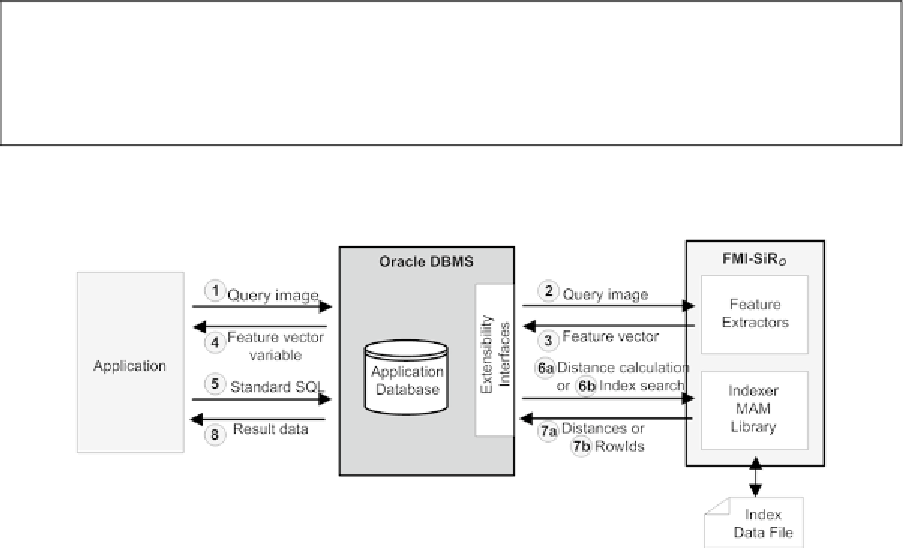Database Reference
In-Depth Information
Algorithm 16.
SELECT * FROM Landscapes
WHERE Place = 'Paris' AND
Figure NEAR 'example.jpg' RANGE 0.03 AND
Figure NEAR 'example.jpg' STOP AFTER 5;
Figure 5. The FMI-SiR
O
architecture
SIREN allows executing simple queries, as well as any combination of operations among themselves
and among traditional selections and joins, providing a powerful way to execute similarity queries in
multimedia databases. For instance, the following query mixes two similarity-based select conditions
and one regular condition: (see Algorithm 16)
As SIREN intercepts the SQL commands, it can detect that the two similarity conditions considers
the same query center and thus they can be executed in only one pass using the kAndRange algorithm
(Traina-Jr et al., 2006). On the other hand, it will always execute first the similarity operations and then
the regular conditions, even if the selectivity of the regular condition is higher. In addition to the ex-
ample provided herein, there are others considering real datasets and several query statements in (Bari-
oni et al., 2006, Barioni et al., 2008).
A DBMS Module for Similarity Searching
FMI-SiR (user-defined Features, Metrics and Indexes for Similarity Retrieval) (Kaster et al., 2009) is
an open-source module that can be attached to a commercial DBMS to provide mechanisms to answer
similarity queries efficiently. This section presents its implementation over the Oracle Database called
the FMI-SiR
O
. Applications employing multimedia data can take advantage of FMI-SiR
O
, defining its
own domain specific feature extractors and/or distance functions, whereas retaining the ability of using
all the powerful resources of the Oracle DBMS in an integrated way.
FMI-SiR
O
is attached to Oracle Database using its extensibility interfaces, as shown in Figure 5.
It includes feature extractors embedded into C++ external functions and it relies on the same access

